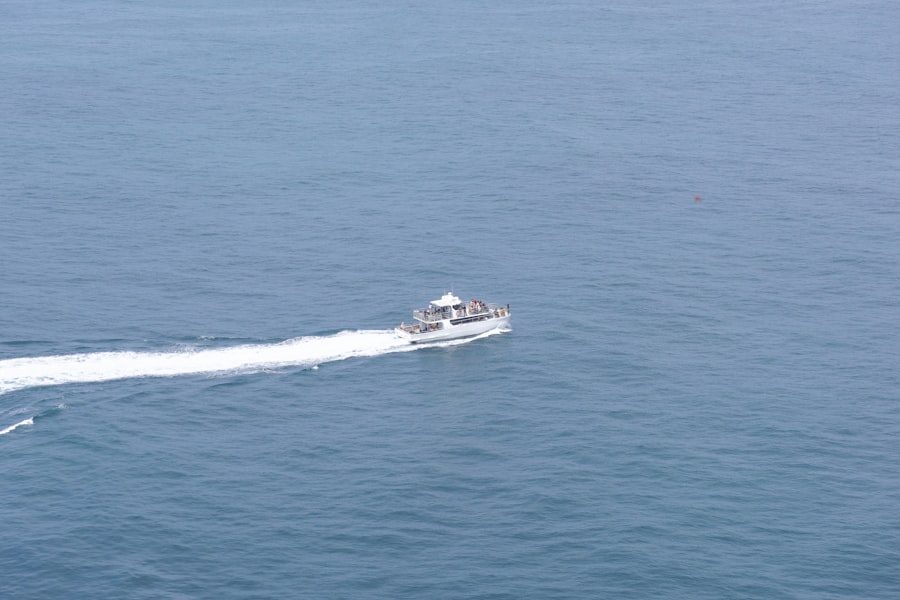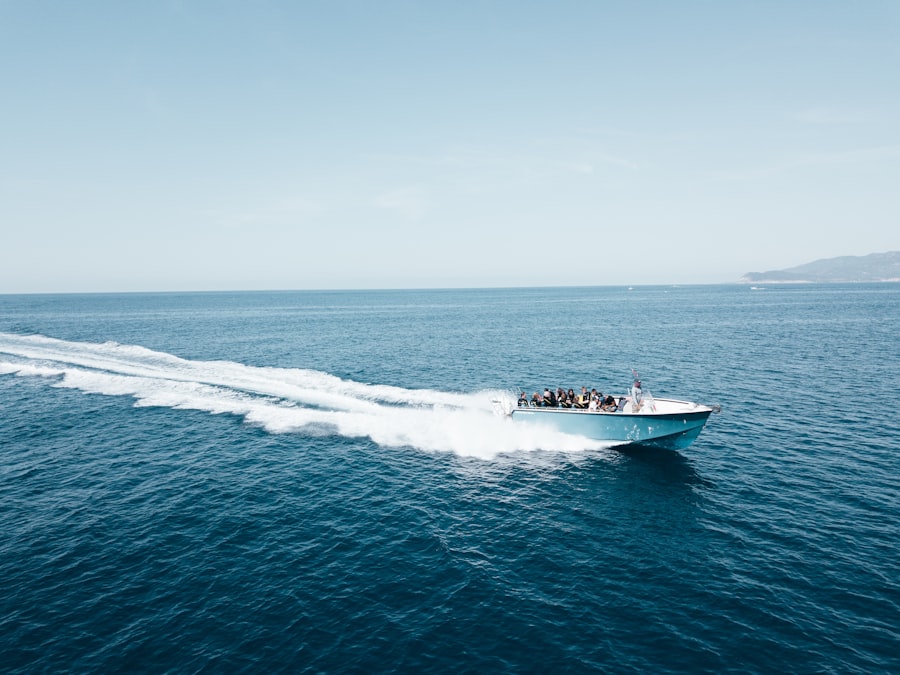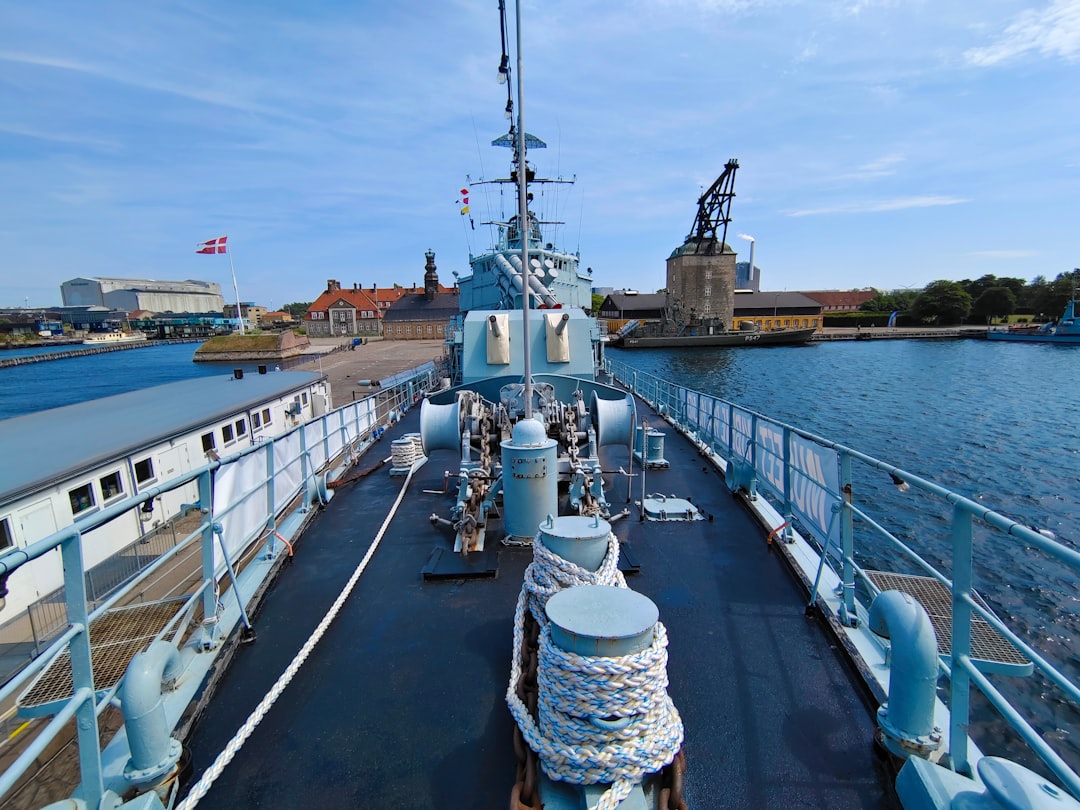The term “Brown Water Navy” refers to naval forces that operate in shallow waters, such as rivers, lakes, and coastal areas, as opposed to the deep-sea operations of a Blue Water Navy. This specialized branch of naval warfare plays a crucial role in ensuring maritime security and supporting ground operations in littoral zones. The Brown Water Navy is characterized by its unique vessels, which are designed for maneuverability and versatility in confined waterways.
These forces are essential for conducting various missions, including patrols, reconnaissance, and support for amphibious operations. As global conflicts increasingly shift towards asymmetric warfare and irregular combat, the significance of the Brown Water Navy has become more pronounced. The operational environment of the Brown Water Navy is often fraught with challenges, including limited visibility, unpredictable weather conditions, and the presence of hostile forces.
These factors necessitate a different approach to naval strategy and tactics compared to traditional naval operations. The Brown Water Navy’s ability to engage in close-quarters combat and support ground troops makes it an indispensable asset in modern military operations. As nations continue to navigate complex geopolitical landscapes, understanding the role and evolution of the Brown Water Navy is vital for comprehending contemporary military strategies.
Key Takeaways
- The Brown Water Navy refers to the riverine and coastal naval operations conducted by the United States military.
- The Brown Water Navy played a crucial role in the Vietnam War, where it operated in the Mekong Delta and other waterways.
- The Brown Water Navy is important for securing inland waterways, conducting counterinsurgency operations, and supporting ground forces.
- Challenges faced by the Brown Water Navy include navigating shallow waters, dealing with guerilla warfare tactics, and countering asymmetric threats.
- The evolution of tactics and technology in the Brown Water Navy has led to the development of specialized vessels and equipment for riverine and coastal operations.
Historical Background of US Brown Water Navy
The origins of the US Brown Water Navy can be traced back to the early 20th century, with significant developments occurring during the Vietnam War. The conflict highlighted the need for specialized naval forces capable of operating in the shallow waters of Southeast Asia’s rivers and deltas. The US Navy’s involvement in Vietnam led to the establishment of the Mobile Riverine Force, which combined naval and ground forces to conduct operations in these challenging environments.
This innovative approach allowed for greater flexibility and responsiveness in combat situations, setting a precedent for future Brown Water Navy operations. Throughout the Vietnam War, the Brown Water Navy played a pivotal role in counterinsurgency efforts, conducting patrols, ambushes, and support missions along the Mekong River and other waterways. The use of swift boats and other shallow-draft vessels enabled US forces to engage enemy combatants while minimizing their exposure to traditional naval threats.
The lessons learned during this period laid the groundwork for modern Brown Water Navy tactics and strategies, influencing subsequent military engagements in various regions around the world.
Role and Importance of Brown Water Navy in US Strategy

The Brown Water Navy serves a multifaceted role within US military strategy, particularly in regions where traditional naval power may be less effective. Its primary function is to provide support for ground forces operating in littoral zones, where conventional naval assets may struggle to navigate. This capability is crucial for ensuring maritime security, conducting counterinsurgency operations, and maintaining a presence in contested areas.
By operating in close proximity to shorelines and river systems, the Brown Water Navy can effectively project power and influence local populations. Moreover, the Brown Water Navy plays a vital role in intelligence gathering and reconnaissance missions. Its ability to operate in shallow waters allows for greater situational awareness and the collection of critical information on enemy movements and activities.
This intelligence is invaluable for informing strategic decision-making and enhancing overall operational effectiveness. As global conflicts evolve, the importance of the Brown Water Navy in supporting US military objectives continues to grow, underscoring its relevance in contemporary warfare.
Challenges Faced by Brown Water Navy
| Challenges | Description |
|---|---|
| Shallow Waters | Brown water navy faces challenges in navigating shallow waters, limiting the types of vessels that can be used. |
| Environmental Factors | Dealing with environmental factors such as mud, silt, and vegetation can hinder operations and maintenance of vessels. |
| Logistics and Supply | Supplying and maintaining vessels in brown water environments can be challenging due to limited infrastructure and access. |
| Security Threats | Brown water navy faces security threats from guerilla warfare, piracy, and smuggling activities in these waters. |
Despite its critical role, the Brown Water Navy faces numerous challenges that can hinder its effectiveness. One significant obstacle is the inherent vulnerability of its vessels in shallow waters. These craft are often exposed to ambushes from enemy forces who may utilize guerrilla tactics or improvised explosive devices (IEDs).
The confined nature of these operational environments can limit maneuverability and complicate logistics, making it difficult for Brown Water Navy units to sustain prolonged engagements. Additionally, the political and social dynamics of regions where the Brown Water Navy operates can pose challenges. Engaging with local populations requires a nuanced understanding of cultural sensitivities and political landscapes.
Missteps can lead to unintended consequences, such as alienating communities or exacerbating tensions. As such, effective communication and collaboration with local forces are essential for successful operations. Navigating these complexities demands a high level of adaptability and strategic foresight from Brown Water Navy personnel.
Evolution of Brown Water Navy Tactics and Technology
Over the years, tactics and technology within the Brown Water Navy have evolved significantly in response to changing operational demands. The introduction of advanced surveillance systems, unmanned aerial vehicles (UAVs), and improved communication technologies has enhanced situational awareness and operational coordination. These innovations allow for more precise targeting and greater efficiency in mission execution, ultimately increasing the effectiveness of Brown Water Navy operations.
Furthermore, training programs have adapted to incorporate lessons learned from past conflicts, emphasizing joint operations with ground forces and interagency collaboration. This evolution reflects a broader understanding of modern warfare’s complexities, where success often hinges on seamless integration between different branches of the military and allied partners. As threats continue to evolve, the Brown Water Navy must remain agile and responsive, continually refining its tactics and embracing new technologies to maintain its strategic advantage.
Comparison with Blue Water Navy Strategy

While both the Brown Water Navy and Blue Water Navy serve essential roles within US military strategy, their operational focuses differ significantly. The Blue Water Navy is primarily concerned with power projection across vast oceanic expanses, utilizing large aircraft carriers, destroyers, and submarines to maintain maritime dominance. In contrast, the Brown Water Navy operates within confined waterways, emphasizing agility and adaptability over sheer firepower.
This distinction leads to different strategic priorities; while Blue Water operations often prioritize deterrence against state actors and securing sea lanes, Brown Water missions focus on counterinsurgency, maritime security, and support for ground operations. The two branches must work in concert to achieve overarching military objectives; however, their differing operational environments necessitate tailored approaches to strategy and tactics. Understanding these differences is crucial for comprehending how the US military navigates complex global challenges.
Case Studies of Brown Water Navy Operations
Several notable case studies illustrate the effectiveness of the Brown Water Navy in various operational contexts. One prominent example is Operation Game Warden during the Vietnam War, which involved extensive riverine operations aimed at disrupting enemy supply lines along the Mekong Delta. Utilizing swift boats equipped with machine guns and reconnaissance capabilities, US forces were able to engage Viet Cong units effectively while providing critical support to ground troops.
Another significant operation occurred during the Iraq War when the US Navy’s Riverine Force was reactivated to address emerging threats along Iraq’s waterways. These forces conducted patrols on rivers such as the Euphrates and Tigris, engaging insurgents while providing security for local populations. The adaptability demonstrated by these units highlights the importance of the Brown Water Navy in addressing contemporary security challenges.
Impact of Brown Water Navy on US Military Power Projection
The presence of a robust Brown Water Navy enhances US military power projection by enabling rapid response capabilities in littoral environments. This flexibility allows for swift deployment of forces in response to emerging threats or humanitarian crises, reinforcing US commitments to regional allies and partners. By maintaining a visible presence in contested waters, the Brown Water Navy contributes to deterrence efforts against potential adversaries while fostering stability in volatile regions.
Moreover, the ability to conduct joint operations with ground forces amplifies the overall effectiveness of US military engagements. The integration of air support, intelligence assets, and local partnerships creates a comprehensive approach to addressing security challenges. As global dynamics continue to shift, the importance of maintaining a capable Brown Water Navy becomes increasingly evident for ensuring national security interests.
Future Prospects and Challenges for Brown Water Navy
Looking ahead, the future prospects for the Brown Water Navy are promising yet fraught with challenges. As geopolitical tensions rise in various regions around the world, there will likely be an increased demand for specialized naval forces capable of operating in shallow waters. However, this demand will require ongoing investment in training, technology, and resources to ensure that personnel are adequately prepared for evolving threats.
Additionally, as climate change impacts global waterways—altering navigability and increasing competition for resources—the Brown Water Navy may face new operational challenges that necessitate innovative solutions. Adapting to these changes will require a proactive approach that emphasizes collaboration with other branches of the military as well as international partners.
International Implications of US Brown Water Navy Strategy
The strategic posture of the US Brown Water Navy has significant international implications as it shapes relationships with allied nations and influences regional security dynamics. By engaging in joint exercises and cooperative missions with partner nations’ naval forces, the US can strengthen alliances while enhancing collective maritime security efforts. This collaborative approach fosters trust among nations while promoting stability in areas prone to conflict.
Moreover, as other countries develop their own brown water capabilities—often influenced by US tactics—the potential for competition or conflict may arise in contested waterways. Understanding these dynamics is essential for formulating effective strategies that address both national interests and regional stability concerns.
Conclusion and Recommendations for US Brown Water Navy Strategy
In conclusion, the US Brown Water Navy plays an indispensable role within contemporary military strategy by providing unique capabilities tailored for operations in shallow waters.
As global security dynamics continue to evolve, it is imperative that policymakers prioritize investment in this specialized naval force.
To enhance its effectiveness further, recommendations include increasing joint training exercises with ground forces and allied nations while investing in advanced technologies that improve situational awareness and operational coordination. Additionally, fostering partnerships with local communities will be crucial for ensuring successful engagements in complex environments. By embracing these strategies moving forward, the US can ensure that its Brown Water Navy remains a vital asset capable of addressing emerging threats while projecting power effectively across diverse operational landscapes.
In analyzing the U.S.
A related article that provides valuable insights into the strategic maneuvers and operational challenges faced by the Brown Water Navy can be found on MyGeoQuest. This article delves into the intricacies of riverine warfare and the tactical innovations that were pivotal during conflicts such as the Vietnam War. For a comprehensive understanding of these strategies, you can explore the detailed analysis by visiting the following link: MyGeoQuest Article on Brown Water Navy Strategy. This resource offers a thorough examination of the strategic elements that have influenced the evolution of the U.S. Brown Water Navy.
WATCH THIS! The Hidden Reason No One Can Invade America | A Geographical Analysis
FAQs
What is the US Brown Water Navy strategy?
The US Brown Water Navy strategy refers to the naval operations conducted in rivers, estuaries, and other shallow waters. It involves the use of small, maneuverable vessels to support military operations in these environments.
What are the objectives of the US Brown Water Navy strategy?
The objectives of the US Brown Water Navy strategy include securing waterways, conducting reconnaissance and surveillance, interdicting enemy movements, and providing support to ground forces operating in riverine and littoral environments.
What types of vessels are used in the US Brown Water Navy strategy?
The US Brown Water Navy strategy utilizes a variety of vessels, including patrol boats, riverine assault craft, landing craft, and support vessels. These vessels are typically smaller and more maneuverable than traditional naval ships, allowing them to operate effectively in shallow waters.
What role does the US Brown Water Navy strategy play in modern military operations?
The US Brown Water Navy strategy continues to play a significant role in modern military operations, particularly in regions where rivers and littoral environments are strategically important. It provides the capability to project power and influence in these areas, as well as support ground forces and conduct maritime security operations.
How does the US Brown Water Navy strategy differ from traditional naval operations?
The US Brown Water Navy strategy differs from traditional naval operations in that it focuses on operating in shallow, confined waters rather than the open ocean. This requires specialized vessels and tactics to navigate and operate effectively in these environments.
